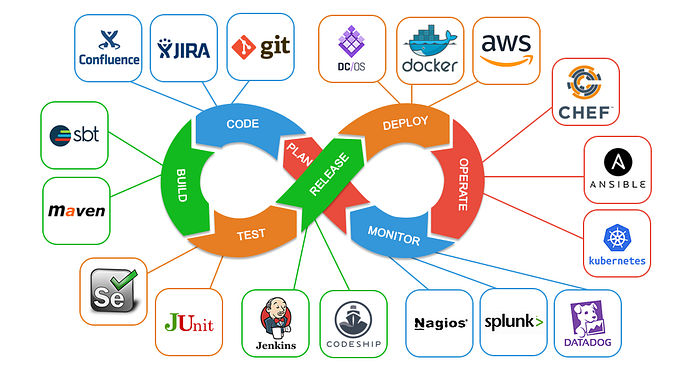What is DevOps?
- Devops is an investment that spans the entire life cycle.
- Devops is a collaborative effort.
- Better software development and delivery processes are enabled by Devops.
- Devops helps you get to the last mile of continuous delivery faster.
"DevOps is the combination of Cultural Philosophies, practices and tools that increases an organizations ability to deliver applications and services at high velocity."
-AWS
"DevOps is a collaborate and multidisciplinary effort within an organization to automate continuous delivery of new software versions, while guaranteeing their correctness and reliability."
-L Leite
"DevOps is the outcome of applying the most trusted principles from the domain of physical manufacturing and leadership to the IT value stream."
The Devops Hand book -Gene Kim, Patrick Debois, et al.
What is the process of Devops?
From the design phase to production release and support, DevOps aims to combine the skills of operations and development professionals.
Some DevOps approaches involve a tighter integration of quality assurance and security teams as part of the development and operations teams merging. As a result of such tight integration, many errors that arise from separate operations (such as testing and deployment) are eliminated.
DevOps teams employ strategies to automate processes and tooling that aid in the faster and more reliable operation and evolution of applications. The entire productivity and velocity of a team are pushed to their maximum thanks to DevOps. This has far-reaching implications that go beyond a business's profit margins.
Benefits of DevOps:
Speed. DevOps principles enable you to move at the speed you need to innovate faster, better adapt to changing markets, and become more efficient at generating business outcomes.
Rapid delivery. You may improve your product faster and get a competitive advantage by increasing the rate of releases.
Reliability. Continuous integration and continuous delivery are DevOps approaches that ensure the quality of application updates and infrastructure modifications, allowing you to deploy at a faster pace while maintaining an optimal user experience.
Improved Collaboration. Developers and operations teams communicate closely, share responsibilities, and merge workflows in a DevOps approach. This cuts down on waste and saves time.
Security. You can use automated, integrated security to implement a DevOps paradigm without sacrificing security.
Why DevOps needed?
- The development and operations teams used to work in total isolation before DevOps.
- After design-build, testing and deployment were separate operations. As a result, they took longer than actual build cycles.
- Team members waste a lot of time testing, deploying, and designing instead of building the product when they don't use DevOps.
- Human errors in production result from manual code deployment.
- The coding and operations teams work on separate schedules and are out of sync, causing additional delays.
Business stakeholders want to speed up the delivery of software. According to a Forrester Consulting study, only 17% of teams can quickly use delivery software, demonstrating the problem.

Comments